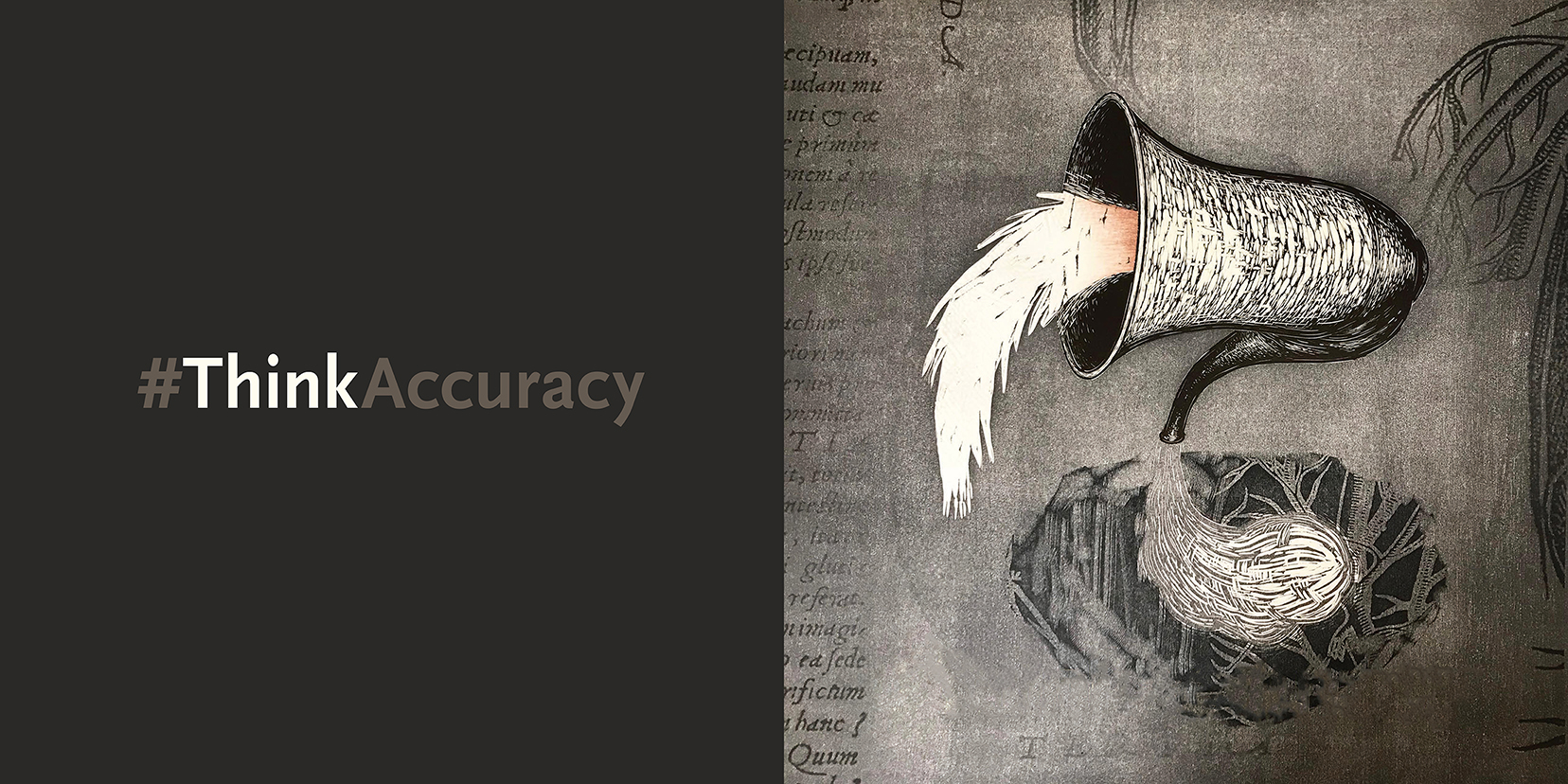The University of Alberta's celebrated fake-science buster, Timothy Caulfield, has turned to his brother-a renowned artist in his own right-to help fight the COVID-19 "infodemic."
"We know that creative communication strategies matter," said Tim. "We thought it was really important to include a unique perspective that would allow individuals to engage these topics in a different way."
Compared with declarative appeals to "think accuracy," "pause before you share" and "break that fake"-all part of the social media ad campaign Tim has launched with Media Smarts-Sean Caulfield's approach as a printmaker is strikingly different.
One of his hand-cut relief prints vaguely suggests coughing or spewing vitriol from a megaphone; another highlights the shape of a lung in what might be a body in distress-all interwoven with images from the history of anatomy, a constant theme in Sean's work.
The lack of clarity is the whole point, he explained. The viewer is meant to stop and think, perhaps shift perspective on an issue around which there's been far too much noise.
"To my mind, I'm trying to create images that-in a loose, open, abstract way-talk about the body and the anxiety around COVID, and that are complex and not easy to read," said Sean.
"I want people to pause and think, 'What's going on here?' It's speaking to emotion, to things that are a bit more intangible."
Each of Sean's images is coupled with a single word of hashtag text, designed by U of A graphic artist and design professor Sue Colberg, such as #ThinkAccuracy, #ScienceBased or #SuperSpreader.
"While the words are important, I wanted them to be relatively quiet so the emphasis would be really on the beauty of Sean's images," said Colberg.
"But I also wanted the words to be powerful so people would consider those terms, maybe do further research on the subject and hopefully get some real information."
The Caulfield brothers' multi-pronged campaign against pseudoscience-called Coronavirus Outbreak: Mapping and Countering Misinformation-is supported by the federal government's Rapid Research Funding Opportunity, created to aid in the battle against COVID-19.
The overall aim of the project is to assess how COVID-19 misinformation spreads through mainstream and social media, and through search engines such as Google, and find ways to fight back.
Sean's images will all be posted first on social media, and perhaps eventually featured in a book designed by Colberg.
They will also form part of a solo exhibition at the Elsie B. Rosefsky Memorial Art Gallery at Binghamton University in upstate New York, and contribute to Dyscorpia 2:1, an online group exhibition that explores intersections between the body and technology, with emphasis on the impact of COVID-19.
And since Tim is on the Royal Society of Canada's COVID-19 response committee, Sean's work will also be spread through the society's channels.
"Research tells us that if you just get people to think about an issue, to pause and think about accuracy, it can make a difference," said Tim.
"And what a great way to do that-with compelling art."
